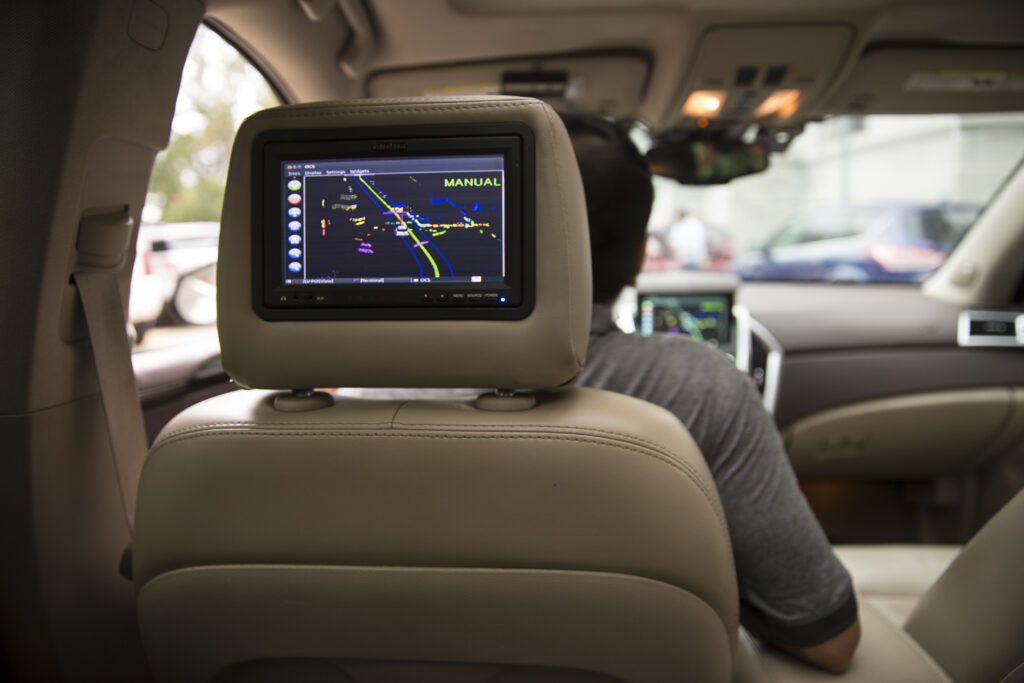When it comes to developing autonomous vehicles (AVs), the challenge has always been clear.
“You can’t just take a vehicle and have it navigate safely on public roads overnight,” explains Jackie Erickson, a founder of the Pittsburgh Robotics Network and senior director of communications at Edge Case Research. “It takes a very long time. We’ve been working on this problem in Pittsburgh for 30 years.”
Raj Rajkumar agrees. He’s a professor of electrical and computer engineering at Carnegie Mellon University’s (CMU) Robotics Institute.
“Driving is the most complex activity we engage in,” he says.
When humans drive, our brains process a rapidly changing landscape, apply the rules of the road, and make constant decisions. Take your eyes off the road for a few seconds, and you could die. It’s no wonder we don’t all own autonomous vehicles (AVs) yet.

That said, experts at the heart of the industry in Pittsburgh — the city Rajkumar calls “the birthplace of AV technology” — have some fascinating updates, as well as reminders of the challenges the field faces.
From self-driving cars to mining robots to moon rovers, companies and academic institutions in Pittsburgh have led the AV field since the early 1980s, not only with their world-class expertise in robotics, but their focus on ground vehicles.
At the 2007 DARPA Grand Challenge, which required AV entrants to navigate a 60-mile urban course in six hours, a team from CMU and General Motors took home the $2 million prize. Rajkumar helped lead the team, and points to that contest as a major spark for the modern AV industry.
Today, graduates of institutions like the University of Pittsburgh and CMU continue to power a sprawling industry that includes AV safety experts like Edge Case, and testing startups such as Aurora, Argo AI, Motional, and Uber ATG.
It’s not just about the movement of people. It’s also important to think about the movement of goods and how good tech can have an impact on that.Gerardo Interiano, Aurora
A major acquisition finalized just this year brings ATG under Aurora’s roof, with an additional $400 million investment in Aurora from Uber.
“We went from having 600 employees to now 1600 employees,” says Gerardo Interiano, Aurora’s vice president of government relations and public affairs. A new headquarters is in the works, and Aurora is forging ahead both with its ultimate goal of driverless cars, as well as a just-announced partnership with trucking manufacturer PACCAR.
Aurora is excited to keep those ATG jobs in Pittsburgh, and regional leaders agree.
“We anticipated consolidation as being inevitable,” says Kyle Chintalapalli of the merger. He’s the vice president for business and economic development with the Pittsburgh Regional Alliance (PRA). “What we were encouraged by is that it wasn’t just a buy-out, [it was] more an investment in Aurora’s growth…It speaks to the strength of the robust ecosystem here.”
“The way I always say it is, Silicon Valley is the money, Detroit is the hardware, and Pittsburgh is the brains,” says Erickson. “And you can’t do anything without the brains.”
The academic pipeline and deep roots in robotics aren’t the only things setting the Pittsburgh area apart when it comes to the AV business.

“The state is putting safety first,” says Steve D’Ettore, deputy secretary of the PA Department of Community & Economic Development’s Office of Technology and Innovation. Safety is “the primary driver behind all policy and strategy in this sector.”
The Pittsburgh-based Edge Case Research team is the “world-recognized leaders in autonomous vehicle safety,” explains Erickson. “We published the first standard for safety for automated vehicles last year, as well as a framework for communication about safety in the industry.”
AV testing law in Pennsylvania, unlike some other states, requires a human operator who’s able to take control of the vehicle if needed. PennDOT’s Office of Transformational Technology Director Mark Kopko notes a two-pronged safety approach: training and licensing the individual operators, and scrutinizing the “safety culture” of participating organizations.
“Even if something goes wrong, you still have the trained operator who has the caliber to take control,” he explains. “It’s something the industry is behind.”
“PennDOT has done a fantastic job,” Erickson adds, noting that during 2018 hearings following a fatal self-driving accident in Tempe, Arizona, the National Transportation Safety Board “acknowledged Pennsylvania as one of the most well-rounded, robust [safety] policies out there…So not only are we leading on tech, we’re leading on systems-based standard approaches when it comes to self-driving cars that will ultimately allow these products to be safe.”
The interesting thing about Pennsylvania versus other states is the surrounding secondary and tertiary industries that develop around automation, particularly in the Pittsburgh region.Mark Kopko, PennDOT
Everyone agrees that the first frontier in everyday AVs won’t be private vehicles, but targeted services that supplement systems we already have. Think low-speed AV shuttles and public-transit applications supporting existing routes — AVs that allow operators to act as a “concierge” to passengers rather than being stuck at the wheel, or “automated trucking on interstate systems.”
The pandemic has caused its own shift in the industry, as a focus on AV shuttles and what Erickson calls “robotaxis” has gone on the back burner because of social distancing, in favor of focus on deliveries.
“It’s not just about the movement of people,” says Interiano. “It’s also important to think about the movement of goods and how good tech can have an impact on that.”
Rajkumar notes that part of the barrier to wider AV adoption isn’t the technology. It’s the cost. LiDAR systems in particular are expensive, and “it makes financial sense” that we’re targeting shuttles, which are constantly in use and moving many people, rather than individual vehicles.
“I have a hard time visualizing personal ownership of an AV,” seconds Erickson. “It’s not there yet.”
The industry would need to standardize the roles and responsibilities of self-driving consumers, a process that will involve insurance companies.

But the AV future is bright, and can continue to thrive in Pittsburgh with the help of a few key factors. One is Pittsburgh’s industry network, a passion for Erickson, who is more circumspect than some other leaders about Aurora’s Uber ATG acquisition.
“I hate to say it, but there were jobs lost in that consolidation,” she says. “We need to build the ecosystem so people have a place to go.”
And PRA’s Chintalapalli emphasizes that the ecosystem goes beyond university grads and testing start-ups. “We have built out and continue to expand partnerships for roles that don’t necessarily come from CMU,” like technician jobs developed in concert with community colleges.
“The interesting thing about Pennsylvania versus other states is the surrounding secondary and tertiary industries that develop around automation, particularly in the Pittsburgh region,” adds Kopko. “You have this whole industry going on in Pittsburgh. It’s not just the testers themselves.”
That includes education research, coding, and mapping, and building everything from safety standards to sensor components to simulation software. It’s a workforce that Kopko predicts will soon see growth in Pennsylvania’s eastern regions as well.
A commitment from the Commonwealth’s elected leaders is also crucial. Erickson has been saying it since the inaugural PennDOT AV Summit in 2017: “The state of Pennsylvania as a whole needs leadership from the top down that incorporates innovation into their agenda,” including federal, state, and local officials. Pennsylvania has to keep up with states whose leaders actively recruit the sector’s players. “This is our economy now in Pittsburgh, so we have to thrive by engaging and building a roadmap for Pennsylvania around technology.”
Rajkumar and Erickson both warn that realistic goals are needed in an industry accustomed to making splashy investor-grabbing announcements.
“Because of the huge sums of money coming in, for quite some time now…the industry overpromised and underdelivered,” says Rajkumar.
“Make the right decisions,” Erickson says of the focus and patience the industry demands. “If you build it right, improve it right, test it right, and live it right with your culture, you will advance safely in your timeline.”
The city is taking that to heart.
With a world-class cluster of AV developers in town, “we’ve dispelled the belief that you can’t build a large multi-national, world-recognized company from Pittsburgh,” adds Chintalapalli.
Rajkumar agrees: “When you put it all together, this city, this region, this state, are the most eligible candidates for pushing this technology forward.”
ALAINA JOHNS is a Philadelphia-based freelance writer and the Editor-in-Chief of BroadStreetReview.com, Philly’s hub for arts, culture and commentary.



